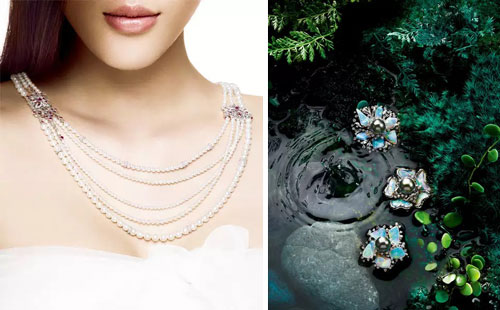Pearl, known as the "Queen of Gems." The English name "Pearl" is derived from the Latin language Pemnla, the meaning of "the pride of the sea", meaning health, longevity and wealth. The varieties of pearls vary in color, with white pearls being a common and classic color.

White pearls contain seawater beads and freshwater beads. In addition to white pearls, there are black pearls and golden pearls. Australia, China and Japan are the main producers of pearls.
Australia is currently the world's largest producer of white marine cultured pearls. 60% of the world's output is from Australia.
China's seawater pearls, also known as Nanzhu, are produced in the coastal ports of Guangxi, Guangdong and Hainan. Nanzhu, crystal and round, with better quality, has a long-standing reputation in history.
At the same time, China also has freshwater non-nuclear cultured pearls, of which Zhejiang and Jiangsu have large output. The output of the two provinces exceeds 80% of the total output of freshwater pearls in China. At present, China's freshwater cultured pearls exceed 90% of the world total.
Japanese sea pearls are produced in the coastal areas of southern Japan, and the mother-of-pearl is called Akoya (also known as Akoya Pearl). Japanese seawater pearls are round and shiny. The color is mostly pink, silvery white, and generally 7 to 9 mm in diameter.
The famous origin of black pearl is Tahiti, which accounts for about 90% of the world's black pearl production. The beauty of the black pearl is that it has a variety of colors on the natural tone of the natural world.
Golden pearls are mainly produced in the Philippines, Indonesia and other places. Nanyang Gold Beads are 9 to 16 mm in diameter, and the colors are mostly between yellow and white.
When consumers choose pearl jewelry, they tend to be the color of the pearl. Today we will discuss the effect of color on pearls.
The color of the pearl refers to the comprehensive characteristics of its body color, accompanying color and smudge. But not all pearls have these three color features.
1, body color
The body color is the overall color of the pearl itself, which depends on the various coloring ions of the pearl, the type and content of the organic pigment.
2, with color
One or several colors floating on the surface of the pearl are called color. Pearls generally have a variety of different color combinations. Common colors are pink, blue, rose, silver, and green.
3, dizzy
Fainting refers to the drifting iridescent color formed on the surface and under the surface of the pearl. There are a variety of colors such as pink, green, yellow, orange, and blue.
In summary, the description of the color of the pearl is generally based on the description of the body color, supplemented by the description of the color and the halo. Color is an important indicator of pearl quality evaluation.
Perfume paper box is a relatively common Perfume Packaging Box. Compared with other packaging boxes, it has a great price advantage in production and raw materials, and is favored by some low middle products.
In addition, because the paper printing method is more flexible, it is also suitable for high-end perfume packaging that pursues exquisite printing technology. Special paper selection and rich printing patterns reflect the design concept of brand perfume products.
custom perfume paper box, Perfume paper packaging box, perfume paper box, Perfume bottles with boxes, empty perfume box
Shenzhen Yi Ding Peng Packaging Design Co., Ltd. , https://www.szydppackages.com
